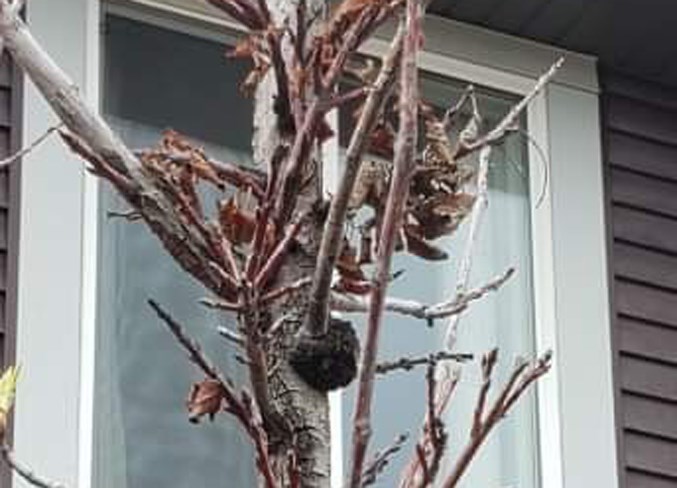Gardeners beware of black knot fungus.
The fungus that produces rough, black growths that encircle and kill the infested parts, and provide habitat for insects is highly infectious and may be lurking on your Schubert cherry or Mayday cherry tree.
If not quickly treated by removing the infected area and the immediate area around it, the fungus could quickly spread to your other trees or even your neighbour's.
"We suggest pruning it out to about four to six inches of disease-free wood," explained Brad Luft, parks manager for the town.
Luft said the town has not had a lot of reports about it this year, but that doesn't mean it isn't lurking in between tree branches so it is advisable for people to have a look.
An avid gardener, Callandra Caufield was "horrified" to learn that her Mayday tree had fallen victim to dibotryon morbosum or apiosporina morbosa – better known as black knot fungus.
"We noticed last year that there was this ring of leaves that wouldn't fall, but we didn't pay much attention to it," said Caufield, whose attention was drawn back to her suspect Mayday when her horticulturalist neighbour in her community of Sunset Ridge pointed it out.
Caufield climbed up a ladder and learned quickly that her tree did indeed have the fungus, which has since had it's top pruned to rid the tree of it.
"I've heard it spreads everywhere ... I hope it stays away."
Caufield has checked her other trees and does not believe it has spread.
Upon removal of the infected area, pruning equipment should be sterilized to prevent cross-contamination. To dispose of the fungus, it should be burned or buried. It can be composted only if the compost undergoes high heat temperatures, such as the Town of Cochrane's green bin composting.



